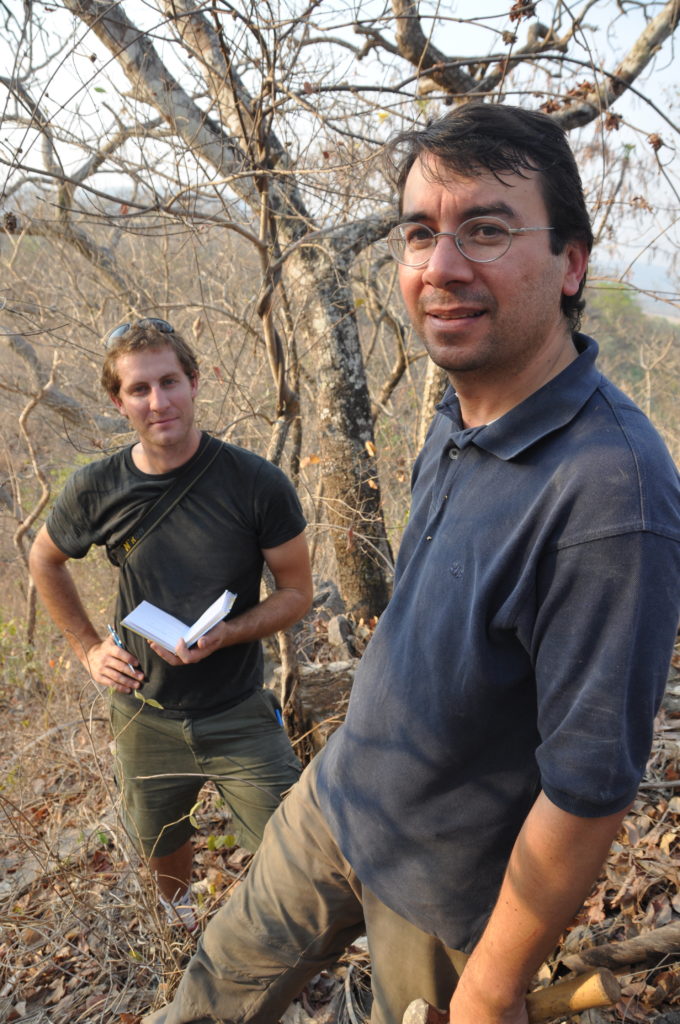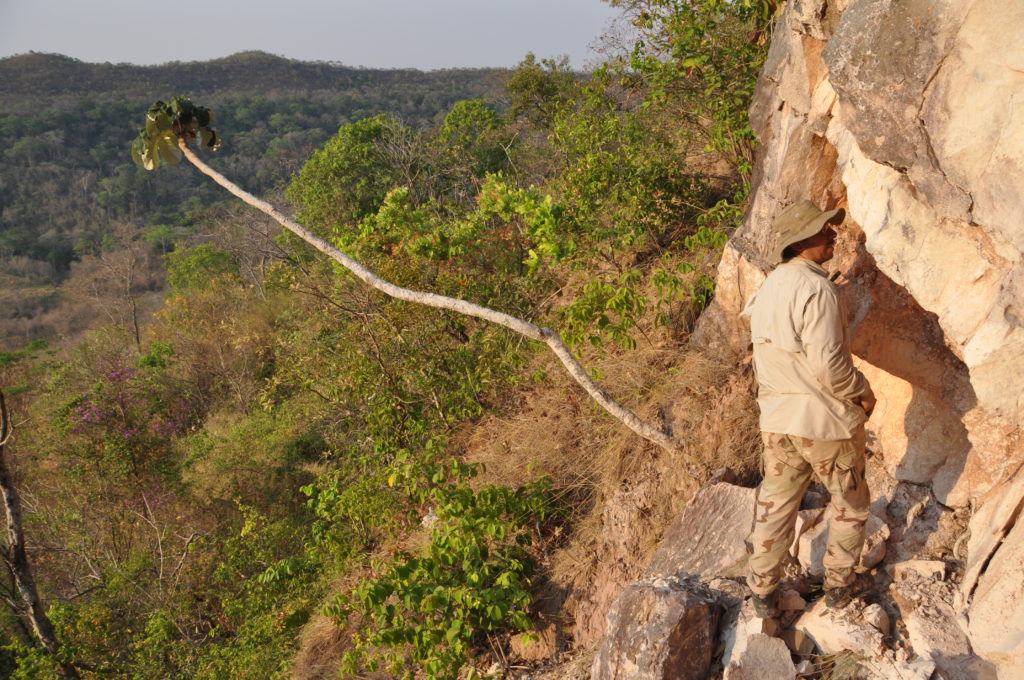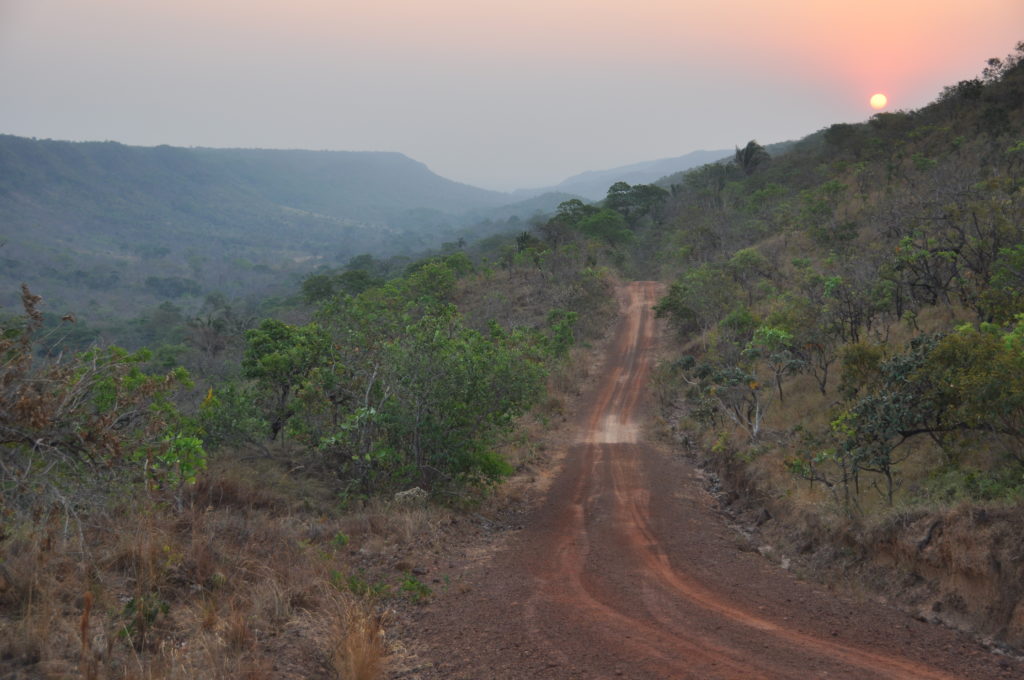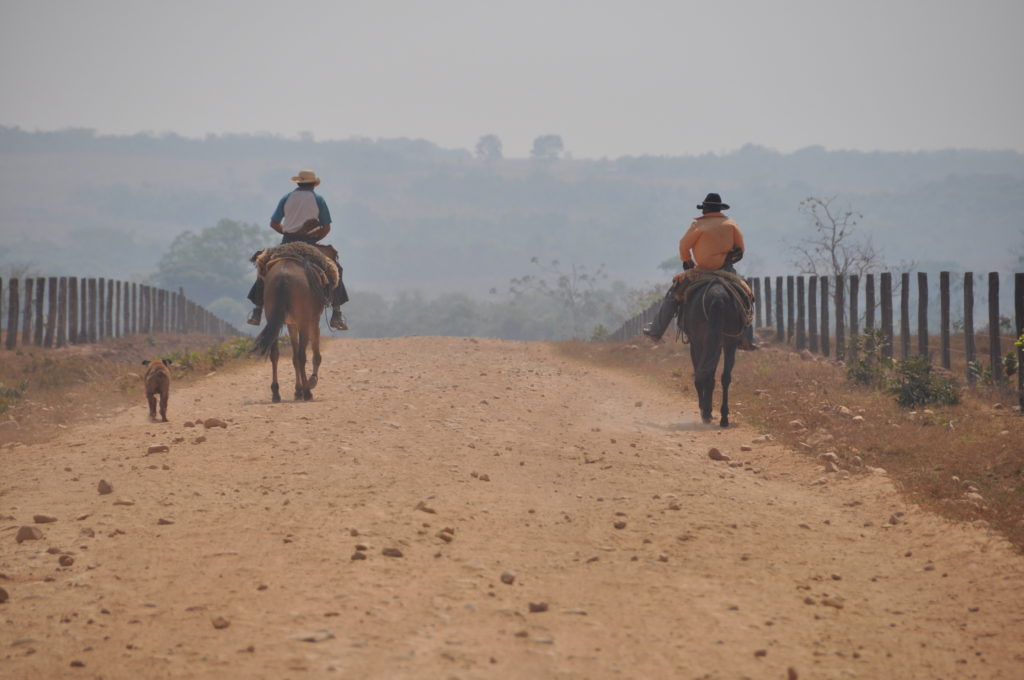Dr Ben McGee completed his PhD at the University of Adelaide in 2013 on the Tectonic Evolution of the Paraguay Belt, Brazil. Since then he has been working as a post-doctoral researcher in Brazil, continuing his work on Gondwana formation in South America. He is also an amazing photographer – check out his website here.
“Stop the car!” A lazy two metre long giant anteater sauntered across the road in front of us as we headed back to our field shack on the flanks of the Serra Azul, blue mountain, a day or so north of Cuiaba in Mato Grosso, far west Brazil.
Then PhD student, Ben McGee, Prof Ricardo Trindade from the Universidade de São Paulo and I were here, in the geographic centre of South America to look at the sedimentary rocks exposed in this foreland to the Gondwana-amalgamating orogens of eastern Brazil. These rocks were deposited in the Ediacaran, after the putative Snowball Earth glaciation of the Marinoan, but before the Cambrian explosion of fossils. In particular, we were there to really try and get a grip on the existence of an enigmatic ocean that may have separated the Amazon region from central Brazil at this time. That ocean was the brain child of our Brazilian superstar collaborator, Ricardo, and he called it the Clymene Ocean. Its very existence is questioned by many, but it is a critical hypothesis because if it was a major ocean in the Ediacaran, then our reconstructions of the world at that time have more degrees of freedom than if it didn’t exist. The logic goes something like this: If the Clymene Ocean didn’t exist, then the Congo/São Franciso continent that makes up east-central Brazil and central Africa, was attached to Amazonia, which was attached to North America (called Laurentia by the cognoscenti) at this time. We think that we know where North America was on the globe in the early Ediacaran – so if they were all attached, then we know where they all were. But, if the Clymene Ocean existed, then we don’t!
Working out this problem involved lots of fieldwork in this beautiful, if hot, part of the world. The region is quite spectacular with whale-back mountains developed out of large antiforms that hold within them secret pools of azure water that are filtered through the Ediacaran limestone. As well as giant anteaters, the bird life is stunning and caiman, or jacaré in Portuguese, haunt the larger waterways. The locals are a colourful bunch as well. Possies of pantanieros, the cowboys of Brazil, roamed around the tracks that led to the small town of Planalto da Serra. This town, it turned out, had been settled twenty years previously by gunslingers kicked out of the neighbouring state of Rondônia—it is where hired guns go to retire! Apparently, they find it hard to give up the old ways, as the local ice cream seller reassured us that the place was safe now as the gun-slingers had all killed each other.
Fieldwork in Brazil is often hot and sweaty, but the end of the day is certainly marked with the coldest beer known to humans. The temperature indicator on the local bar fridge is usually showing below freezing temperatures and the trick with the beer is to get it just warm enough so that it doesn’t freeze when you depressurise it by opening the bottle! It is pretty disappointing to get a bottle of beer-flavoured ice… But then, there is always the world’s best cocktail, the caipirinha to fall back on…
![]() This work is licensed under a Creative Commons Attribution-NonCommercial-ShareAlike 4.0 International License.
This work is licensed under a Creative Commons Attribution-NonCommercial-ShareAlike 4.0 International License.





